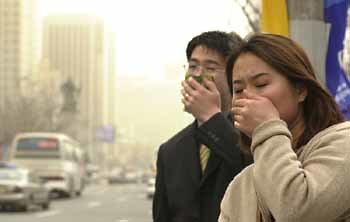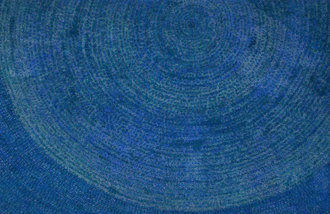Season for Eyes’ Ordeal

The major offenders are yellow sand storm and pollen. Especially, `uninvited` yellow sand from China contains various heavy metal elements and dust, threatening the eye-health. According to Korea Meteorological Administration, this year’s yellow sand storm is to be worse than usual both in number of occurrence and amount.
April – May is the climax of pollen, which causes various allergic eye-diseases. Also as dry weather is continuing due to spring drought, Dry Eye Syndrome (DES) patients must take good care of their eye-health.
Major eye-diseases that come in springtime include stimulative and allergic conjunctivitis, keratitis, and corneal ulcer.
Among them, yellow sand is the main cause of stimulative conjunctivitis and keratitis. When heavy metal elements like iron, silicon, copper, lead, cadmium, and aluminum that are contained in yellow sand enter the eye, symptoms of pricking and uncomfortable feelings follow. The cornea attains scars when rubbed by hand, and it becomes infected of bacteria, which causes keratitis. Apart from the itchy symptom, other characteristics include sneezing, shedding tears, and swelling of eyes.
As the weather becomes warmer and outing occasions increase, chemical conjunctivitis patients also increase due to uses of cosmetics. Cosmetics’ ingredients stimulate the cornea in the eye.
Also, there are many cataract patients, who complain about day blindness that they cannot see objects in strong sun light. There are many individuals who make self-decisions to take antihistamines, but it is safer to consult specialists because antihistamines cause drowsiness.
The best method is to avoid outing as much as possible to stay away from the factors that may cause eye-diseases. In cases of outing, hats and sunglasses are recommended to protect eyes, and hands need to be washed from time to time. Rubbing eyes due to itching or stinging is absolutely prohibited. It is good to wash eyes with saline solution or warm water.
Regular-base contact-lenses users are recommended to wear glasses at least during springtime, when yellow sand and pollen are in the air. When heavy metal and dust in yellow sand adheres onto the lenses, they stimulate conjunctiva and cornea to cause either conjunctivitis or scars on the cornea. Also, yellow sand storm may worsen lenses’ dryness and uncomfortable feeling to make it hard to wear contact lenses.
DES patients are to blink often to let out more tears, or use artificial tears. Although tears can kill bacteria and remove waste matters, such functions weaken as DES worsens. It would be helpful to use a humidifier, maintaining appropriate indoor humidity.
Some people are wondering if Lasik-surgery can be done in the midst of yellow sand and pollen. There will be no big hindrance, but sensitive care before and after the surgery is required. Before the surgery, fine dust or pollen on clothes must be brushed off, and after the surgery, the use of artificial tears is required to avoid DES.
(Reference = Professor Kim Man-Su at Catholic University, Kangnam St. Mary’s Hospital, ophthalmology/ Director Lee Jong-Ho of Chungdam Balgeun Se Sang Clinic)
Ji-Wan Cha maruduk@donga.com







